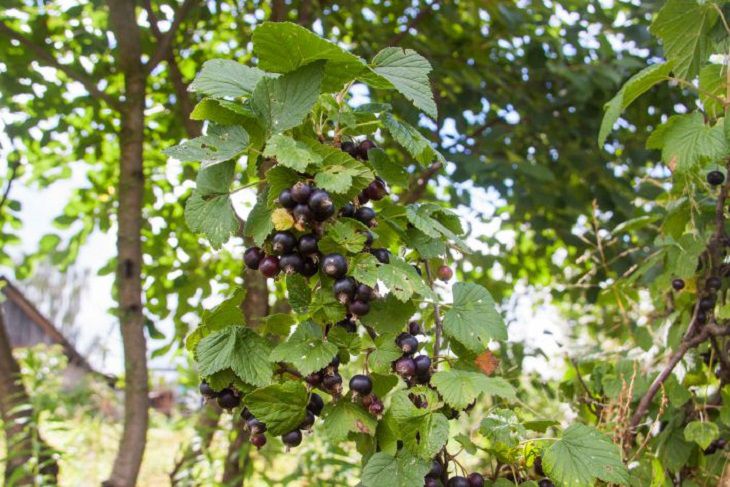Gardeners often wonder about the correct planting of currants, because the health of the plant and the harvest depend on it.
Currants are a popular berry in gardens, and their correct planting plays a key role in achieving a rich harvest.
Many people face problems with poor growth and low yields.
One of the secrets to successful currant growing is planting at an angle. Why is this method so effective and how to use it correctly?
The effect of inclined planting on the root system
Planting currants at an angle promotes the development of a strong and branched root system.

When the bush is positioned at an angle, the roots begin to actively grow in different directions, increasing their area.
This allows the plant to better absorb water and nutrients from the soil. As a result, the currant becomes more resistant to drought and other adverse conditions.
Stimulation of new shoot growth
Sloping planting promotes the growth of new shoots. When a currant bush is planted at an angle, more buds form on its stem, from which young shoots then develop.
These shoots will become the main branches of the bush in the future, which will have a positive effect on the yield. In addition, young shoots are more resistant to diseases and pests.
Strengthening the bush
Planting currants at an angle helps strengthen the bush. With this method of planting, the bush becomes more resistant to wind loads and other external influences.
This is especially important in regions with frequent and strong winds. Bushes planted at an angle break less and better withstand the weight of the berries during ripening.
Improving air exchange and lighting
An inclined planting promotes better air exchange and illumination of the bush.
This helps reduce the risk of developing fungal diseases, which often occur due to stagnant moisture and poor ventilation.
Good illumination of the bush promotes better photosynthesis, which has a positive effect on the growth and development of the plant.
As a result, the currant bush grows healthier and produces a bountiful harvest.
Correct technique for inclined landing
To achieve maximum effect, it is important to plant currants correctly at an angle. The first step is to prepare the planting hole.
The hole should be dug about 40-50 cm deep and wide. Then organic fertilizers and a little wood ash are added to it.
The currant bush should be placed in the hole at an angle of 45 degrees.
The roots are carefully straightened and covered with soil, lightly tamping it down. After planting, the plant is watered generously.
Caring for currants after planting
After slanted planting, currants require special care. First of all, it is necessary to monitor the moisture level in the soil.
Regular watering is especially important in the first year after planting, when the plant is actively developing its root system.
It is also necessary to mulch the soil around the bush. This will help retain moisture and prevent weed growth.
Peat, humus or straw can be used as mulch.
Disease and pest prevention
Planting currants at an angle reduces the risk of developing many diseases, but prevention is still necessary.
In early spring, the bushes should be treated with copper-based preparations to protect against fungal infections.
During the season, it is necessary to inspect the bushes and, if pests are detected, take appropriate measures.
Regular pruning and removal of diseased shoots will also help maintain healthy plants.
Increasing crop yields
One of the main advantages of slanted planting is a significant increase in crop yields.
Thanks to the developed root system and a large number of shoots, the currant bush produces more berries.
The berries become larger and juicier, which is especially important for gardeners who sell their harvest.
In addition, proper planting and care can increase the fruiting period of the bushes, which makes this method even more attractive.
Saving space on the site
Sloping planting allows you to save space on the site. Bushes planted at an angle take up less space and do not interfere with each other.
This is especially important for small garden plots, where every square meter counts.
This method allows you to fit more plants into a limited space and get a higher yield.
Tips from experienced gardeners
Experienced gardeners advise not to neglect the inclined planting of currants.
They note that this planting method produces excellent results with minimal effort.
The main thing is to monitor the condition of the plants and take care of them in a timely manner.
Regular watering, fertilizing and pruning will help you achieve maximum effect and enjoy a rich harvest every year.
Earlier we talked about how to help strawberries after recurrent frosts.








